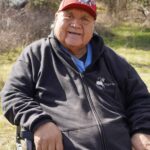The IPCC report spells out the immediate need to address the way we use energy, protect our land, and manage our resources; and that the changes required are “unprecedented” but not impossible. For us, the report exemplifies the need for a better understanding of specific actions that can reduce emissions at regional scales. Here at Ecotrust, we recently undertook a study that we hope will provide answers to the question so many in our region have been asking since the report was released: “What now?”



